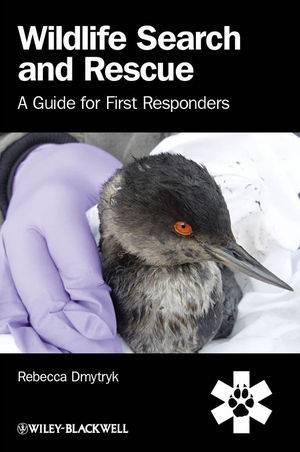Mehr lesen
Informationen zum Autor In the last thirty years, Rebecca Dmytryk has become a leading authority in wildlife rescue having been on the front lines of some of the largest wildlife recovery missions, including the Gulf Oil Spill. From her office in Monterey, California she and her husband, Duane Titus operate WildRescue, offering around the clock response to emergencies involving wildlife and serving all of California with a state-of-the-art toll-free wildlife hotline. Klappentext Rescuing wild animals in distress requires a unique set of skills, very different from those used in handling domestic animals. The equipment, degree of handling, the type of caging and level of care a wild animal receives can mean the difference between life and death. Wildlife Search and Rescue is a comprehensive guide on 'best practices' and suggested standards for response to sick, injured and orphaned wildlife. This valuable resource covers the fundamentals of wildlife rescue, from 'phone to field', including safe and successful capture strategies, handling and restraint techniques and initial aid. Wildlife Search and Rescue is a must have for anyone interested in knowing what to do when they are face to face with a wild animal in need, or for anyone involved in animal rescue. While the book focuses on wildlife native to North America, much of the information and many of the techniques are applicable to other species, including domestic dogs and cats.Visit www.wiley.com/go/dmytryk/wildlifeemergency to access the figures from the book. Zusammenfassung Rescuing wild animals in distress requires a unique set of skills, very different from those used in handling domestic animals. The equipment, degree of handling, the type of caging and level of care a wild animal receives can mean the difference between life and death. Inhaltsverzeichnis Foreword Jay Holcomb xiii Preface xvii 1 Overview of wildlife rescue 1 2 Characterizing wildlife search and rescue 3 3 Laws and regulations governing wildlife rescue in the USA 7 4 Code of practice 10 5 The components of wildlife search and rescue 11 Human safety 11 Environmental hazards 11 Human factor hazards 12 Equipment hazards 13 Health risks 13 Zoonotic diseases 15 Bacterial infections 15 Fungal infections 18 Viruses 19 Parasites 19 Personal protective equipment 22 Protection from hazardous materials 24 Basic safety and preparedness guidelines 26 Operational risk management 27 Outfitting 32 The welfare of the animal 34 Understanding stress 35 Minimizing stress during rescue operations 38 Potential for success 40 The mindset of the hunter and the hunted 42 The importance of natural history 42 The fundamentals of the search 43 The fundamentals of the capture 45 6 Anatomy of a response team 52 7 Overview of wildlife capture equipment 55 The towel 55 Herding boards 55 Nets and netting 57 The hoop net 57 The open-ended hoop net 58 The throw net 60 Land seine 60 Mechanical nets 60 Active land seine 60 The bow net and Q-net 61 The whoosh net 62 Driving, funnel, and walk-in traps 63 The dho-gaza 66 Drop traps 66 Cage traps 68 Projectile-powered nets 68 Lures 69 Catchpole 70 8 Capture, handling, and confinement of wild birds 71 Techniques for capturing wild birds 71 Enticing wild birds using lures 71 The Bartos trap 76 Snare-type traps 76 Bal-chatri 76 The phai trap 78 Noose carpets 79 The single snare 79 Leg snare pole 84 Swan hook 85 Pit traps 85 Mist nets 86 On the water 86 Flo...

